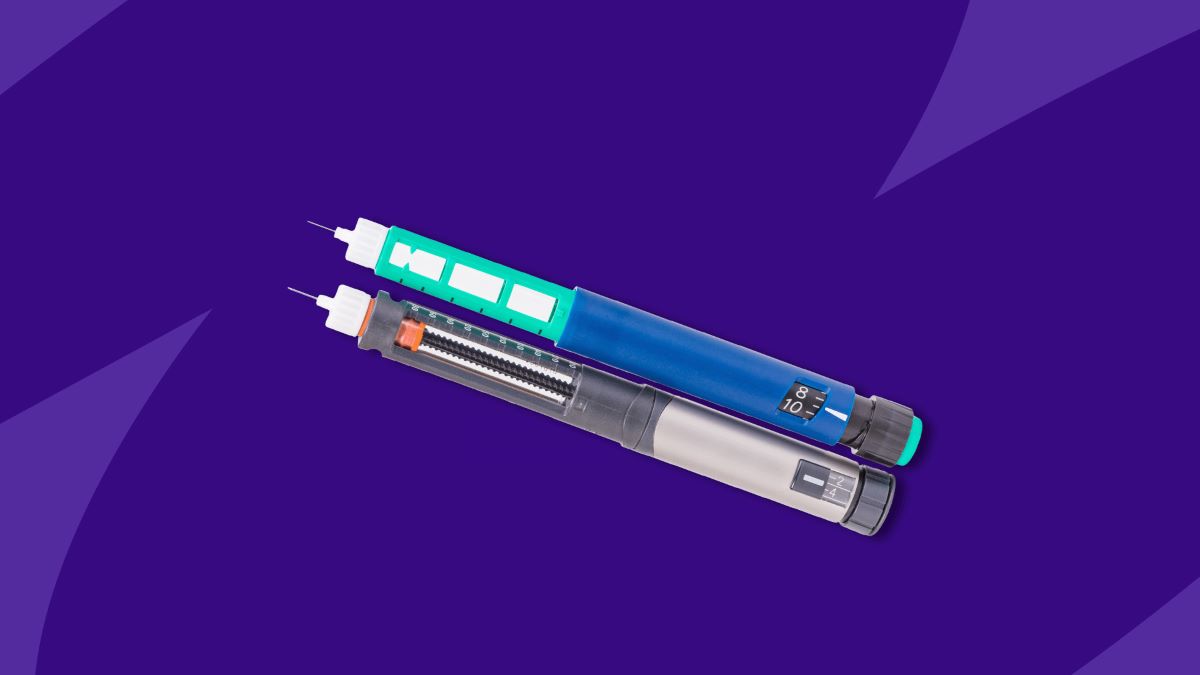

Finance
How To Get Panniculectomy Covered By Insurance
Published: November 12, 2023
Learn how to get your panniculectomy procedure covered by insurance with our comprehensive finance guide. Maximize your chances of getting the financial support you need!
(Many of the links in this article redirect to a specific reviewed product. Your purchase of these products through affiliate links helps to generate commission for LiveWell, at no extra cost. Learn more)
Table of Contents
- Introduction
- Understanding Panniculectomy
- Insurance Coverage for Panniculectomy
- Steps to Get Panniculectomy Covered by Insurance
- Evaluating Insurance Policies and Requirements
- Documenting Medical Necessity
- Obtaining Pre-authorization from the Insurance Company
- Appealing Insurance Denials for Panniculectomy
- Final Thoughts and Considerations
- Conclusion
Introduction
A panniculectomy is a surgical procedure that involves the removal of excess skin and fat from the lower abdomen. This procedure is often performed on individuals who have lost a significant amount of weight, either through diet and exercise or bariatric surgery. The excess skin and fat in the abdominal area, known as a pannus, can cause physical discomfort, skin infections, and negatively impact a person’s quality of life.
While panniculectomy can provide substantial health benefits and improve body contour, the cost of the procedure can be a significant barrier for many individuals seeking this type of surgery. However, some insurance companies may provide coverage for panniculectomy if it is deemed medically necessary.
In this article, we will explore the process of getting panniculectomy covered by insurance. We will discuss the steps involved, including evaluating insurance policies and requirements, documenting medical necessity, obtaining pre-authorization, and appealing insurance denials. By understanding the process and requirements, individuals can navigate the insurance landscape more effectively and increase their chances of getting the procedure covered.
It is important to note that every insurance company and policy may have different coverage criteria for panniculectomy. It is crucial to carefully review your specific insurance policy and consult with your healthcare provider to understand the coverage options available to you.
Now, let’s delve into the details of getting panniculectomy covered by insurance.
Understanding Panniculectomy
Panniculectomy is a surgical procedure that focuses on removing excess skin and fat from the lower abdomen area. It differs from a tummy tuck, also known as abdominoplasty, as panniculectomy primarily targets the pannus, which refers to the fold of skin and fat that hangs over the lower abdominal region.
The pannus can be a result of significant weight loss, pregnancy, or genetics. It may cause various physical and psychological discomfort such as skin infections, rashes, difficulty performing daily activities, and self-esteem issues. Panniculectomy aims to alleviate these concerns by reducing the excess skin and fat, resulting in a smoother, more contoured abdominal area.
Panniculectomy is typically performed under general anesthesia, and the procedure may take several hours depending on the extent of excess tissue that needs to be removed. During the surgery, the surgeon makes a horizontal incision in the lower abdomen, typically below the belly button. The excess skin and fat are then carefully excised, and the remaining skin is tightened and repositioned. In some cases, liposuction may also be performed to further enhance the results.
It is important to note that while panniculectomy can improve body contour and address physical discomfort, it is not a weight loss procedure. It is crucial for individuals considering panniculectomy to maintain a stable weight and have realistic expectations about the outcome of the surgery.
Now that we have a better understanding of what panniculectomy entails, let’s explore the insurance coverage options available for this procedure.
Insurance Coverage for Panniculectomy
Insurance coverage for panniculectomy can vary significantly depending on the insurance company, policy, and individual circumstances. While some insurance policies may categorize panniculectomy as a purely cosmetic procedure and exclude coverage, others may provide coverage if the procedure is deemed medically necessary.
Medical necessity criteria for panniculectomy typically include specific guidelines that determine when the procedure is deemed appropriate. These guidelines may include criteria such as:
- A documented history of significant weight loss, typically defined as losing more than a certain percentage of your body weight
- Presence of physical symptoms or functional limitations caused by the excess skin and fat, such as chronic skin infections, rashes, or difficulty with mobility and daily activities
- Evidence of previous unsuccessful attempts to manage the symptoms, such as non-surgical interventions like physical therapy or medication
It is crucial to thoroughly review your insurance policy to understand the specific coverage criteria for panniculectomy. Contacting your insurance company directly or consulting with your healthcare provider can help clarify the coverage options available to you.
Furthermore, it is important to note that even if your insurance policy provides coverage for panniculectomy, you may still be responsible for certain out-of-pocket expenses. This can include deductibles, co-pays, and co-insurance. Understanding your insurance policy’s financial obligations is crucial to avoid any unexpected costs.
In the next section, we will discuss the steps you can take to increase your chances of getting panniculectomy covered by insurance.
Steps to Get Panniculectomy Covered by Insurance
Getting panniculectomy covered by insurance can be a detailed process that requires careful preparation and documentation. By following these steps, you can increase your chances of receiving insurance coverage for the procedure:
- Evaluate Insurance Policies and Requirements: Begin by reviewing your insurance policy to understand the coverage options available for panniculectomy. Look for specific criteria and guidelines regarding medical necessity and coverage limitations. Additionally, check if prior authorization or pre-approval is required.
- Document Medical Necessity: To demonstrate medical necessity, gather all relevant medical records, including documentation of significant weight loss, physical symptoms or functional limitations caused by the excess skin and fat, and evidence of failed non-surgical interventions. It can be helpful to have your healthcare provider write a detailed letter explaining the medical necessity of panniculectomy and how it will improve your quality of life.
- Obtain Pre-authorization from the Insurance Company: Contact your insurance company to inquire about their specific pre-authorization process for panniculectomy. Follow their instructions to submit all required documentation, such as medical records, letters of medical necessity, and any other supporting evidence.
- Utilize an Experienced Healthcare Coder: An experienced healthcare coder can assist in accurately coding and documenting the procedure to ensure that it meets the insurance company’s requirements. This can help avoid any coding errors that may lead to a denial of coverage.
- Keep Detailed Records: Throughout the process, keep a record of all communications with your insurance company, including dates, times, names of representatives spoken to, and any reference numbers or case IDs provided. This will help you track the progress of your pre-authorization and provide valuable documentation if an appeal becomes necessary.
- Appeal Insurance Denials, if necessary: If your initial request for coverage is denied, do not lose hope. Review the denial letter carefully to understand the reasons given. You have the right to appeal the decision. Consult with your healthcare provider and gather any additional documentation that may strengthen your case. Follow the appeal process provided by your insurance company, providing a thorough and compelling argument for the medical necessity of the procedure.
Remember, the process of getting panniculectomy covered by insurance may require patience and persistence. It is crucial to stay organized, communicate effectively with your insurance company, and seek assistance from your healthcare provider or a patient advocate if needed.
Next, we will delve into how to evaluate insurance policies and requirements for panniculectomy.
Evaluating Insurance Policies and Requirements
When seeking coverage for panniculectomy, it is essential to thoroughly evaluate your insurance policy and understand the specific requirements and guidelines for the procedure. Here are some key steps to consider when evaluating insurance policies:
- Read the Policy: Take the time to carefully read your insurance policy, paying close attention to the sections related to surgical procedures, cosmetic surgery, and coverage limitations. Look for any exclusions or restrictions regarding panniculectomy.
- Check Medical Necessity Criteria: Insurance companies often require medical necessity criteria to be met before providing coverage for panniculectomy. Review these criteria to determine if you meet the eligibility requirements. Look for specific guidelines related to weight loss, physical symptoms, and failed non-surgical interventions.
- Understand Coverage Limitations: Some policies may only cover panniculectomy if it is performed in conjunction with other medically necessary procedures, such as hernia repair or reconstructive surgery. Familiarize yourself with any coverage limitations or requirements that may apply.
- Review Pre-authorization Process: Determine if your insurance company requires pre-authorization or pre-approval for panniculectomy. Understand the steps involved, including the types of documentation that need to be submitted and any specific timelines to follow.
- Identify In-Network Providers: Check if your insurance policy requires the use of in-network healthcare providers. If so, identify and consult with surgeons who are contracted with your insurance company to ensure coverage eligibility.
- Consider Second Opinions: In some cases, insurance companies may require a second opinion from a healthcare provider before approving coverage for panniculectomy. Be prepared to seek a second opinion if necessary.
Throughout the process, it is crucial to keep detailed records of your interactions with the insurance company, including the names of individuals you speak to, dates, and any reference numbers or case IDs provided. This documentation can be invaluable in case of any disputes or appeals.
By thoroughly evaluating your insurance policy and understanding the requirements and limitations, you can better navigate the process of seeking coverage for panniculectomy. In the next section, we will discuss the importance of documenting medical necessity.
Documenting Medical Necessity
Documenting the medical necessity of panniculectomy is a crucial step in obtaining insurance coverage for the procedure. Insurance companies require substantial evidence to support the claim that panniculectomy is medically necessary for an individual’s health and well-being. Here are some important factors to consider when documenting medical necessity:
- Gather Relevant Medical Records: Collect all pertinent medical records that demonstrate the need for panniculectomy. This may include records of significant weight loss, documentation of physical symptoms or functional limitations caused by the excess skin and fat, and evidence of failed non-surgical interventions to manage these symptoms.
- Medical Provider’s Letter: Request a detailed letter from your healthcare provider explaining the medical necessity of panniculectomy. The letter should clearly describe how the procedure will address your specific health concerns, alleviate symptoms, and improve your overall quality of life. Provide your healthcare provider with all relevant information to ensure they have a comprehensive understanding of your condition.
- Photographic Documentation: Take and include photographs that clearly illustrate the excess skin and fat in the abdominal area. These photographs should show the size, shape, and any associated physical symptoms or limitations. Make sure the photographs are well-lit, properly focused, and accurately represent your condition.
- Patient Testimonials: If applicable, gather testimonials or statements from other healthcare providers, therapists, or individuals who can attest to the impact of your condition on your daily life. This additional support can strengthen your case for medical necessity.
- Consistency in Documentation: Ensure that all the documents and records you provide align with each other and support your claim of medical necessity. This consistency will strengthen your argument and help insurance reviewers understand the severity and impact of your condition.
It is essential to be proactive and organized when gathering and submitting documentation. Make copies of all documents and keep a record of what has been submitted to the insurance company for future reference.
Seeking the guidance of your healthcare provider throughout the documentation process is crucial. They can provide valuable insight into what information is necessary and assist in preparing a comprehensive case for medical necessity.
Once you have assembled the necessary documentation, the next step is to obtain pre-authorization from the insurance company. We will explore this process in the next section.
Obtaining Pre-authorization from the Insurance Company
Obtaining pre-authorization from your insurance company is a critical step in the process of getting panniculectomy covered. Pre-authorization, also known as pre-approval or prior authorization, ensures that the insurance company reviews your case and determines if the procedure meets their criteria for coverage. Here are the steps to obtain pre-authorization:
- Contact Your Insurance Company: Call your insurance company’s customer service line or visit their website to inquire about the pre-authorization process for panniculectomy. Obtain any necessary forms or instructions and ask for clarification on any specific requirements.
- Complete the Paperwork: Fill out all required forms and include any supporting documentation, such as medical records, letters of medical necessity, and photographs. Provide accurate and detailed information to ensure a complete and accurate review of your case.
- Submit the Pre-authorization Request: Send the completed forms and supporting documents to the appropriate department within your insurance company as instructed. Make sure to retain copies of all documents for your records.
- Follow Up: After submitting the pre-authorization request, it is important to follow up with your insurance company to confirm receipt of the documents and inquire about the status of your request. Note any reference numbers or case IDs provided for future reference.
- Be Prepared for Additional Requests: In some cases, the insurance company may request additional information or documentation to further evaluate your case. Respond to these requests promptly and provide all requested materials to avoid any unnecessary delays.
- Keep a Record of Communications: Throughout the pre-authorization process, maintain a detailed record of all communications with your insurance company, including dates, times, names of representatives spoken to, and any relevant notes or information exchanged. This documentation will be valuable in case of any disputes or appeals in the future.
It is important to note that pre-authorization does not guarantee coverage. However, it is a critical step that helps establish the medical necessity of the procedure and gives you a clearer understanding of the insurance company’s decision.
If your pre-authorization request is approved, you can proceed with the panniculectomy procedure knowing that insurance coverage has been confirmed. However, if your request is denied, do not lose hope. The next section will discuss the process of appealing insurance denials for panniculectomy.
Appealing Insurance Denials for Panniculectomy
Receiving a denial from your insurance company does not necessarily mean the end of the road for obtaining coverage for panniculectomy. Insurance denials can be appealed, giving you the opportunity to present additional evidence and arguments to support your case for medical necessity. Here are the steps to follow when appealing an insurance denial:
- Review the Denial Letter: Carefully read the denial letter from your insurance company to understand the reasons for the denial. Take note of any specific criteria or documentation that may be lacking, as this will be crucial to address in your appeal.
- Consult with Your Healthcare Provider: Share the denial letter with your healthcare provider to seek their input and guidance on the appeals process. They can assist in gathering additional evidence, writing an appeal letter, and providing any necessary medical documentation.
- Submit a Written Appeal: Write a thorough and compelling appeal letter that addresses each reason stated in the denial letter. Include any additional information or documentation that supports your case for medical necessity. Be sure to adhere to the insurance company’s specific appeals process and timelines.
- Provide Strong Documentation: Include any new or updated medical records, letters of medical necessity, photographs, or testimonials that further support your case. Clearly outline how the procedure will alleviate symptoms, improve your quality of life, and align with the insurance company’s coverage criteria.
- Follow Up on the Appeal: Keep track of all correspondence related to the appeal, including dates and names of individuals involved. Follow up with the insurance company to confirm receipt of your appeal and inquire about the status. Be prepared to provide any additional requested documentation promptly.
- Consider an Independent Review: Some insurance companies offer an independent external review process where a third-party reviewer assesses the case. If all internal appeals have been exhausted, you may have the option to request an independent review.
- Seek Legal Assistance, if Necessary: If you have tried all available appeals within the insurance company’s process and still face a denial, it may be appropriate to seek legal advice from a professional experienced in healthcare insurance matters. They can provide guidance on your options and help navigate the legal aspects of the appeals process.
Remember to remain persistent and thorough throughout the appeals process. Documentation, clear communication, and a well-constructed argument are key to increasing your chances of having the insurance denial overturned and obtaining coverage for panniculectomy.
Finally, let’s discuss some final thoughts and considerations regarding insurance coverage for panniculectomy.
Final Thoughts and Considerations
Seeking insurance coverage for panniculectomy can be a complex and challenging process. However, with proper preparation and persistence, it is possible to navigate the insurance landscape successfully. Here are some final thoughts and considerations to keep in mind:
- Research Your Insurance Policy: Familiarize yourself with your insurance policy’s coverage provisions, limitations, and requirements for panniculectomy. Understand the medical necessity criteria, pre-authorization process, and documentation requirements specific to your policy.
- Consult with Your Healthcare Provider: Engage in open and transparent communication with your healthcare provider. They can provide valuable guidance, assist in documenting medical necessity, and support your case throughout the insurance process.
- Keep Accurate and Detailed Records: Maintain copies of all documents, correspondence, and communication with your insurance company. This documentation will be important for reference, tracking progress, and potential appeals.
- Persist with Appeals, if Necessary: If your initial request for coverage is denied, do not give up. Progress through the appeals process, providing additional documentation and addressing the reasons for denial. Consider seeking legal assistance, if needed.
- Consider Alternative Financing Options: In some cases, insurance coverage may not be available or feasible. Explore alternative financing options, such as personal loans or payment plans, to cover the cost of panniculectomy if insurance coverage is not an option.
- Be Realistic about Out-of-Pocket Expenses: Even if insurance coverage is approved, be prepared for out-of-pocket costs such as deductibles, co-pays, and co-insurance. Understand your financial responsibilities and plan accordingly.
- Take Care of Your Health Overall: Whether or not insurance coverage is obtained, prioritize your overall health and well-being. Maintain a healthy lifestyle, exercise regularly, and consult with healthcare professionals for ongoing support.
Remember that each insurance policy and situation is unique, so it’s crucial to consult with your insurance company and healthcare provider to fully understand your options and pursue the path that aligns with your specific circumstances.
By understanding the process, gathering strong documentation, and being persistent in your efforts, you can increase your chances of getting panniculectomy covered by insurance. Good luck on your journey toward improved health and well-being!
Conclusion
Obtaining insurance coverage for panniculectomy can be a complex process, but with the right knowledge and proactive approach, it is possible to navigate the insurance landscape successfully. Understanding your insurance policy, documenting medical necessity, obtaining pre-authorization, and appealing denials are crucial steps in pursuing coverage for this procedure.
Remember to thoroughly review your insurance policy, paying close attention to medical necessity criteria and coverage limitations specific to panniculectomy. Consult with your healthcare provider to gather strong documentation and support for your case. Be diligent in submitting pre-authorization requests and promptly follow up with the insurance company to track progress.
In the event of a denial, don’t lose hope. Carefully review the denial letter, consult with your healthcare provider, and prepare a detailed appeal highlighting additional evidence that supports the medical necessity of the procedure. Consider seeking legal assistance if necessary.
It is important to also explore alternative financing options and be prepared for out-of-pocket expenses. Prioritize your overall health and well-being, maintaining a healthy lifestyle and seeking ongoing support from healthcare professionals.
Disclaimer:
It is crucial to note that the information provided in this article is for informational purposes only and does not constitute professional legal or medical advice. Insurance coverage varies depending on individual circumstances, policies, and insurance providers. Consult with your insurance company and healthcare provider to understand the specific coverage options, criteria, and requirements for panniculectomy in your situation.
While the process of obtaining insurance coverage for panniculectomy may be challenging, maintaining patience, persistence, and advocating for your health can increase your chances of securing the coverage you need to improve your quality of life.
Remember that your well-being is the priority, whether or not insurance coverage is obtained. Pursue the path that aligns with your individual circumstances and prioritize your overall health and happiness.














